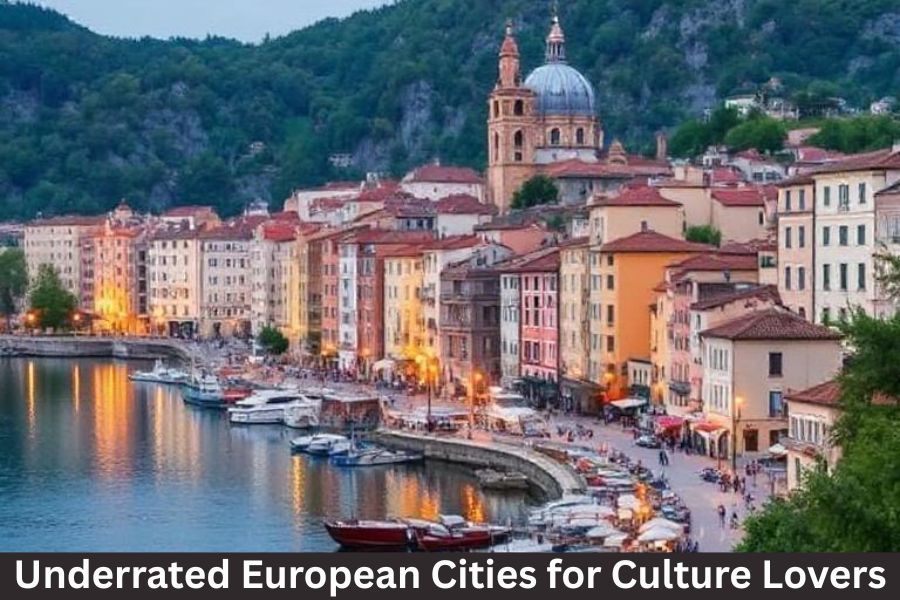Europe is bursting with cultural gems—beyond the famed capitals like Paris, Rome, and London lie countless cities that offer rich history, vibrant art scenes, and authentic local experiences without the overwhelming crowds. If you’re a culture lover looking to explore somewhere off the beaten path, these underrated European cities deserve a spot on your travel bucket list.
1. Lviv, Ukraine
Often overlooked due to geopolitical concerns, Lviv is a hidden jewel in Eastern Europe with a remarkably well-preserved Old Town and a blend of Eastern European and Central European influences. Its cobbled streets are lined with baroque and neoclassical architecture, cozy coffee houses, and vibrant markets.
Culture lovers will appreciate Lviv’s thriving arts scene—from classical music concerts in ornate theaters to avant-garde galleries showcasing Ukraine’s contemporary artists. Don’t miss the Lviv Opera House and the chance to sip traditional coffee in a centuries-old café.
2. Porto, Portugal
Portugal’s second city, Porto, is a delight for those who appreciate a mix of history, art, and gastronomy. The city’s UNESCO-listed historic center offers colorful tiled facades, medieval churches, and picturesque riverfront views along the Douro River.
Porto’s cultural scene is anchored by places like the Serralves Museum of Contemporary Art and the Casa da Música, a striking modern concert hall. For literature buffs, the Lello Bookstore—one of the world’s most beautiful bookstores—is a must-visit.
3. Graz, Austria
While Vienna and Salzburg often steal the spotlight, Graz is Austria’s second-largest city and a true cultural hub. Its charming old town, also a UNESCO World Heritage site, combines Renaissance and Baroque architecture with vibrant street art and a youthful vibe thanks to its university population.
Culture seekers will enjoy exploring the Kunsthaus Graz—a futuristic art museum nicknamed the “Friendly Alien”—and the historic Schlossberg, a hilltop fortress with panoramic city views. Graz is also famous for its culinary traditions and numerous festivals celebrating music, film, and theater.
4. Novi Sad, Serbia
Nestled on the banks of the Danube, Novi Sad offers a compelling mix of Austro-Hungarian, Ottoman, and Serbian influences. This lively city has been gaining traction as Serbia’s cultural capital thanks to its vibrant art galleries, music festivals (including the massive EXIT Festival), and historic sites.
Don’t miss Petrovaradin Fortress, often called the “Gibraltar on the Danube,” which hosts events and offers spectacular views. Novi Sad’s museums and theaters offer a deep dive into Serbian history and contemporary culture.
5. Vilnius, Lithuania
Often overshadowed by its Baltic neighbors Tallinn and Riga, Vilnius boasts one of Europe’s largest surviving medieval old towns. Its narrow streets lead to an eclectic mix of Gothic, Renaissance, and Baroque architecture, alongside quirky street art and bohemian cafés.
Vilnius is a hotspot for artists and intellectuals, home to numerous galleries, theaters, and music venues. The city’s rich Jewish heritage and the story of its resilience during WWII are powerfully preserved in museums like the Vilna Gaon Jewish State Museum.
6. Turku, Finland
Finland’s former capital, Turku, is a cultural treasure on the Baltic Sea coast. It’s packed with museums, historic landmarks, and a lively music scene, yet remains largely undiscovered by international tourists.
Highlights include the medieval Turku Castle, the 19th-century Turku Art Museum, and the annual Turku Music Festival, Finland’s oldest classical music festival. Turku’s archipelago also offers beautiful landscapes, making it perfect for culture and nature lovers alike.
Why Choose Underrated Cities?
Traveling to lesser-known cities offers unique advantages:
- Authentic Experiences: With fewer tourists, you get to engage more deeply with locals and traditions.
- Lower Costs: Often, accommodation, dining, and attractions are more affordable.
- Less Crowded: Enjoy cultural sites without the hustle and bustle typical of major tourist hubs.
- New Discoveries: Experience fresh perspectives on European history, art, and cuisine.
FAQs About Underrated European Cities for Culture Lovers
Q1: Are these cities safe for tourists?
Yes, all the cities listed—Lviv, Porto, Graz, Novi Sad, Vilnius, and Turku—are generally safe for tourists. Like any destination, standard travel precautions apply. It’s wise to stay updated on local news, especially regarding Lviv due to the ongoing conflict in Ukraine, and follow travel advisories.
Q2: When is the best time to visit these cities?
Spring (April to June) and early autumn (September to October) are ideal for most of these cities. The weather is mild, and cultural events often take place during these periods. Summer can be busy but lively, while winter offers a cozy charm, especially in Vilnius and Turku.
Q3: How accessible are these cities?
Most of these cities are well-connected by train or budget flights from major European hubs. Porto and Graz have international airports, while cities like Novi Sad and Vilnius can be reached by train or short domestic flights. Public transportation and bike rentals make getting around easy.
Q4: What kind of cultural experiences can I expect?
Expect a rich mix of historical architecture, world-class museums, live music, local festivals, traditional cuisine, and friendly locals eager to share their culture. Each city has its own unique identity shaped by history, art, and local customs.
Q5: Are these cities family-friendly?
Yes, many of these destinations offer family-friendly museums, parks, and cultural events. Porto and Turku, for example, have numerous outdoor spaces and activities suitable for children, while Vilnius offers interactive museums and festivals that appeal to all ages.



